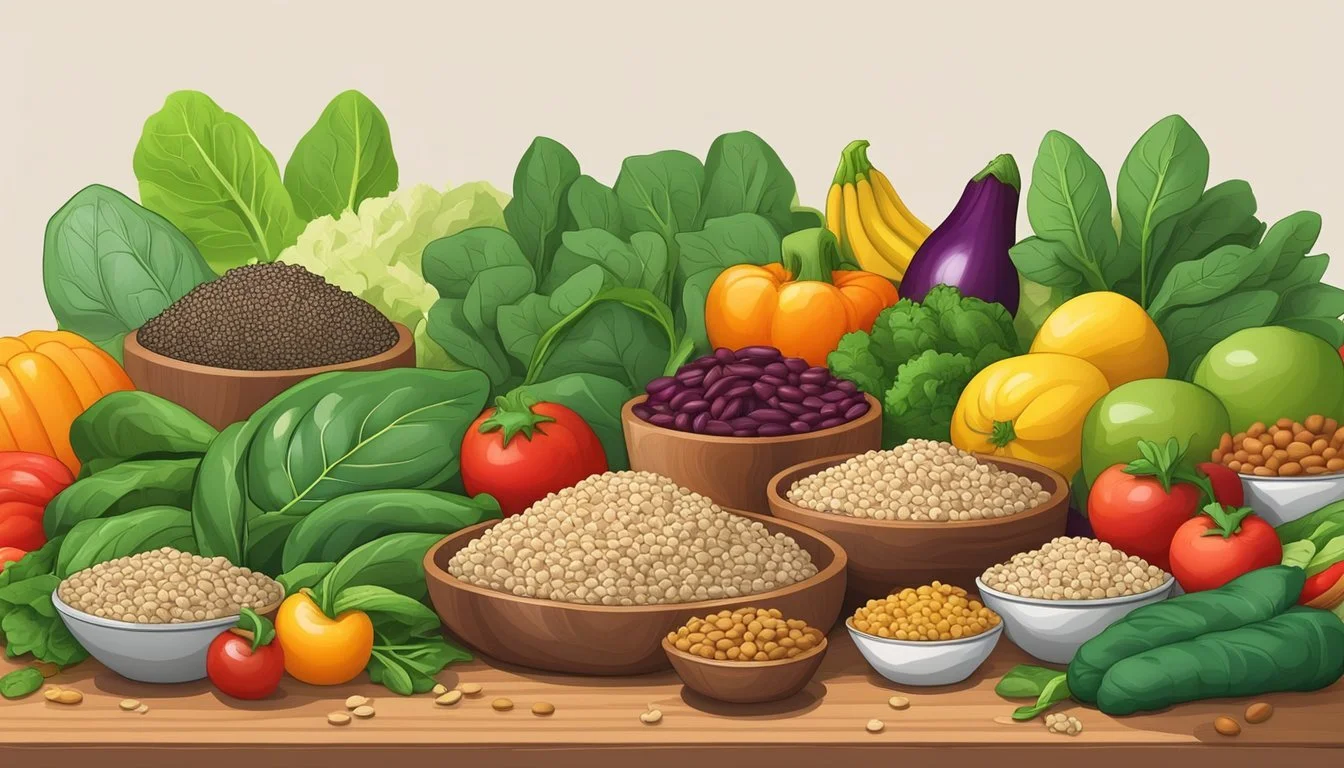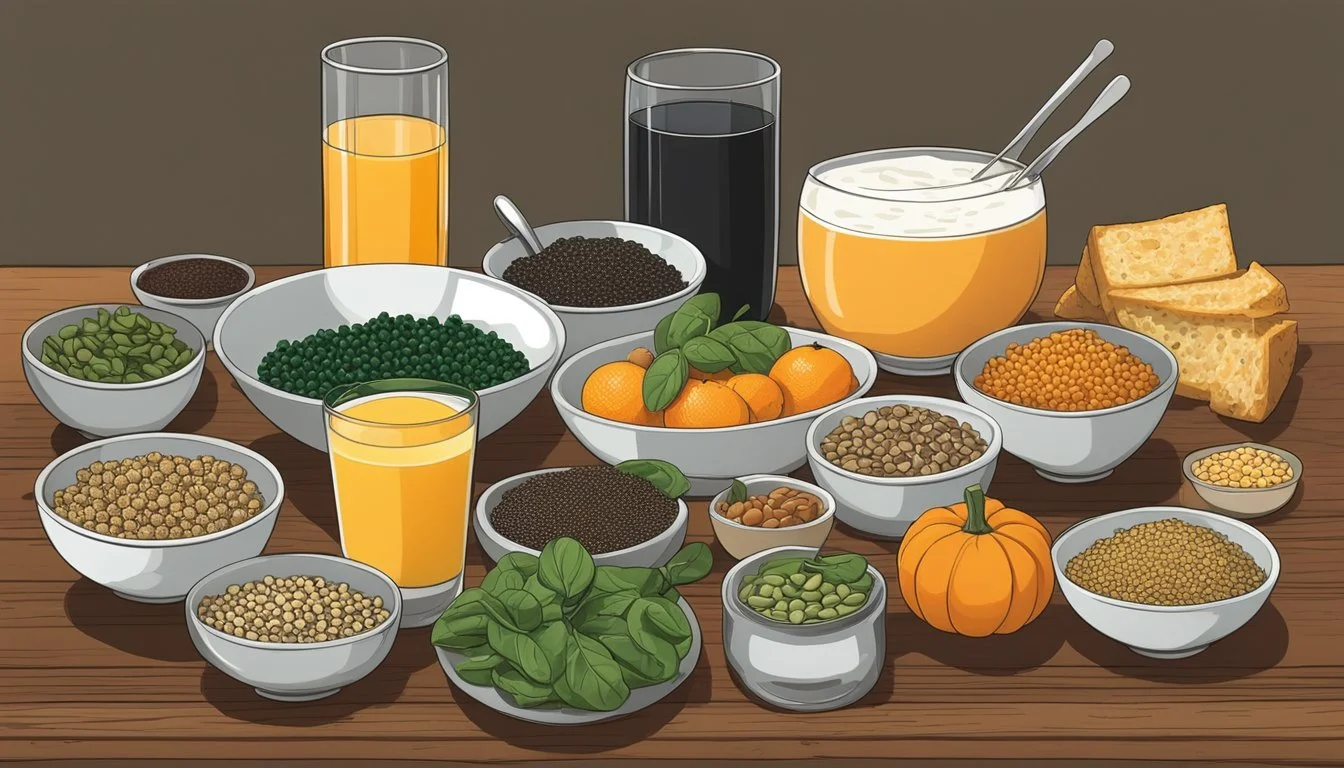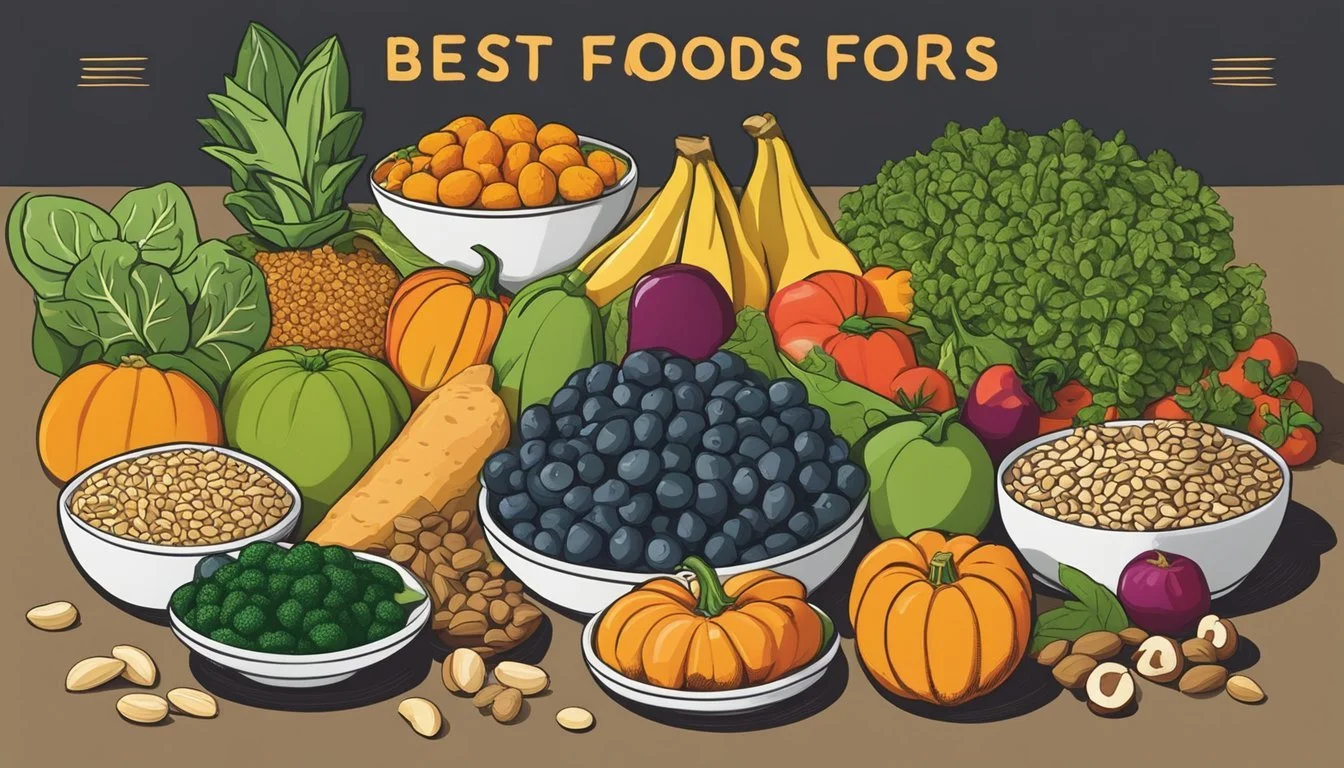Best Foods for a Boost of Iron Without Red Meat
Top Plant-Based Alternatives
Maintaining adequate iron levels is crucial for overall health, especially for those who do not consume red meat (What wine goes well with red meat?). Iron deficiency can manifest in various forms such as fatigue, weakness, and compromised immune function. It's a common misconception that meat is the only viable source of iron; in fact, there are plenty of plant-based options that are rich in this essential mineral. Vegetarians and those looking to reduce their meat intake for health or ethical reasons can easily find iron-rich alternatives to meet their dietary requirements.
Iron-rich foods that serve as excellent alternatives to red meat include a variety of beans, seeds, and vegetables. Legumes like lentils and chickpeas are not only high in iron but also provide protein and fiber. Seeds, such as pumpkin, sesame (found abundantly in tahini), and sunflower seeds, are small yet potent sources of non-heme iron, which is the type of iron found in plant foods. Dark leafy greens, including spinach (What wine goes well with spinach?), kale, (What wine goes well with kale?) and collard greens, have high iron content as well and can be easily incorporated into everyday meals.
When it comes to enhancing iron absorption from these foods, the presence of vitamin C is key. Consuming foods like tomatoes, bell peppers, broccoli, and citrus fruits alongside iron-rich foods can significantly boost the uptake of iron by the body. This synergy makes it easier for individuals following a vegetarian diet to maintain their iron levels without the need for red meat, ensuring they can achieve a well-rounded and nutrient-dense diet.
Understanding Iron and Its Importance
Iron, a critical mineral for human health, plays a pivotal role in the production of hemoglobin and maintaining adequate energy levels. This section will explore the different types of iron that are essential for bodily functions, the effects of iron deficiency on health, and the recommended daily intake of iron.
Types of Iron: Heme vs. Non-Heme
Heme iron, originating mainly from animal sources like red meat, is absorbed by the body more efficiently than non-heme iron, which is found in plant-based foods. While heme iron is an important component of hemoglobin in red blood cells, non-heme iron is also crucial, as it constitutes the majority of iron in the human diet.
Role of Iron in the Body
Iron's primary role is to bind with hemoglobin and myoglobin, transporting oxygen to the cells and supporting muscle metabolism. Adequate iron levels are vital for cellular function and synthesis of some hormones and connective tissues.
Consequences of Iron Deficiency
Insufficient iron intake can lead to iron-deficiency anemia, characterized by symptoms such as fatigue and weakness. This condition reduces the production of hemoglobin, impairing oxygen delivery to the cells, which is critical for energy production and overall development.
Daily Iron Requirements
Daily iron requirements vary by age and gender. The general recommendations are as follows:
For adult males: 8 mg/day
For adult females (ages 19-50): 18 mg/day
For pregnant individuals: 27 mg/day
These needs can be met through a balanced diet that includes both heme and non-heme iron sources, ensuring proper mineral balance for optimal health.
Top Non-Meat Iron Sources
A variety of plant-based foods offer substantial amounts of iron, suitable for those looking for alternatives to red meat. These foods not only provide iron but also come packed with other essential nutrients.
Iron-Rich Legumes
Legumes are a powerhouse category when it comes to iron content.
Lentils: One cup of cooked lentils contains about 6.6 mg of iron.
Chickpeas: Also known as garbanzo beans, they provide around 4.7 mg of iron per cup when cooked.
Beans: Various beans, especially black beans, offer about 3-4 mg of iron per cup cooked.
Leafy Greens and Vegetables
Leafy greens are not only full of iron but also carry other vitamins and minerals.
Spinach: Raw spinach has about 0.81 mg of iron per cup, but when cooked, a cup can offer a significant 6.4 mg.
Kale: Known for its nutrient density, a cup of cooked kale offers around 1.2 mg of iron.
Broccoli: This vegetable provides around 1 mg of iron per cup, along with a host of other vital nutrients.
Nutrient-Dense Seeds and Nuts
Seeds and nuts contain healthy fats and protein, in addition to being good iron sources.
Pumpkin Seeds: They offer about 2.5 mg of iron per ounce.
Cashews: With roughly 2 mg of iron per ounce, they also contribute healthy fats.
Hemp Seeds: These seeds bring in about 1 mg of iron per tablespoon.
Whole Grains and Fortified Cereals
Grains and cereals can be iron-fortified, which makes them an essential component of an iron-rich diet.
Whole Grains: Foods like quinoa contain about 2.8 mg of iron per cup cooked.
Fortified Cereals: Certain cereals are fortified with iron and can provide 18 mg or more per serving.
Maximizing Iron Absorption
To enhance iron absorption from plant-based sources, individuals can employ specific dietary strategies. Two pivotal approaches involve pairing iron-rich foods with vitamin C and steering clear of certain compounds that can interfere with iron uptake.
Combining Iron with Vitamin C
Consuming vitamin C alongside non-heme iron-rich foods substantially increases absorption. Vitamin C acts as a potent enhancer of iron absorption when consumed together with iron. Examples include:
Citrus fruits: Oranges, lemons, and limes
Strawberries: Fresh or lightly cooked to preserve vitamin C content
Broccoli: Best when steamed or eaten raw
Here is a simple table illustrating effective food pairings:
Iron-Rich Food Vitamin C Source Spinach Orange slices Lentils Red bell peppers Fortified cereals Kiwi
Avoiding Inhibitors of Iron Absorption
Certain substances can impede iron absorption and should be consumed at different times than iron-rich meals. These include:
Calcium: Competes with iron for the same absorption pathways; dairy and various fortified plant milks are rich in calcium.
Coffee and Tea: Contain polyphenols that bond with iron, rendering it less available for absorption; it is advisable to wait a couple of hours post-iron-rich meals before consuming these beverages.
Fiber: High-fiber foods may hinder iron absorption; spacing the intake of high-fiber foods and iron sources can be beneficial.
Mindful timing and food pairing can significantly improve iron absorption, ensuring adequate iron intake without the need for red meat.
Innovative Iron-Rich Recipes
In focusing on meals without red meat, one can still enjoy an iron-rich diet through creative uses of legumes, dark leafy greens, and nutrient-dense grains and seeds. These dishes are crafted to enhance iron absorption and can cater to both lunch and dinner settings.
Creative Legume-Based Dishes
Chickpea Spinach Salad: A refreshing combination of chickpeas and baby spinach leaves, tossed with a lemon tahini dressing. This dish not only provides a good source of iron but is also high in protein.
Black Bean and Quinoa Burgers: These hearty burgers made from black beans and quinoa are rich in iron and flavor. Serve with a dollop of homemade hummus for an additional iron boost.
Leafy Green-Incorporated Meals
Kale & Cannellini Bean Soup: A nourishing soup where kale, the star leafy green, is simmered with cannellini beans and aromatic herbs, offering a comforting iron-rich meal.
Spinach and Tofu Stir-fry: Perfect for a quick dinner, this stir-fry includes iron-rich spinach and tofu as its main ingredients, with a savory sauce to amplify the flavors.
Whole Grain and Seed Mixes
Quinoa & Flaxseed Wraps: An innovative twist on wraps using quinoa and ground flaxseeds, stuffed with your choice of vegetables and beans, creating an iron-packed lunch option.
Soybean and Seed Pilaf: A flavorful pilaf where soybeans, sunflower seeds, and cooked whole grains are the core elements, offering a substantial iron contribution to any meal.
Understanding Iron Supplements
Iron supplements are an alternative way to ensure adequate iron intake, especially for individuals who do not consume red meat or may have an increased need for this essential mineral. They can help maintain iron levels and prevent iron deficiency, which can be identified by symptoms like fatigue and weakness.
Types of Iron Supplements
There are two primary forms of iron found in supplements: heme and non-heme iron. Heme iron is derived from hemoglobin and is readily absorbed by the body, while non-heme iron is typically sourced from plants and requires substances like vitamin C to enhance absorption.
Iron Salts
Ferrous sulfate
Ferrous gluconate
Ferrous fumarate
These are commonly available and often more affordable, but may cause gastrointestinal side effects in some individuals.
Chelated Iron
Iron bisglycinate
Polysaccharide iron complex
Chelated forms bind iron to amino acids, often improving absorption and reducing gastrointestinal discomfort.
Vertical bars used indicate a table:
Form of Iron Supplement Characteristics Iron Salts Affordable, may cause side effects Chelated Iron Better absorbed, less side effects
Vitamin C is often recommended in conjunction with iron supplements to improve absorption.
When to Consider Supplementation
Individuals should consider iron supplementation if they:
Exhibit symptoms of iron deficiency, such as persistent tiredness, breathlessness, or pale complexion.
Have been diagnosed with an iron deficiency by a healthcare provider.
Are at risk of low iron levels due to factors like heavy menstrual bleeding, a vegetarian or vegan diet, or certain medical conditions.
It's important for individuals to consult a healthcare professional before beginning any supplement regimen to determine the appropriate dosage and to avoid potential complications, such as iron overload. They should also be aware of their total daily iron intake from both dietary sources and supplements to avoid exceeding the recommended amounts.
Lifestyle Adjustments for Better Iron Intake
When opting for a plant-based diet, individuals should carefully plan their meals to ensure adequate iron intake. Given that plants contain non-heme iron, which is absorbed less efficiently than the heme iron in meat, consumers need to be strategic.
Meal Frequency and Composition: They should consider consuming smaller, iron-rich meals more frequently throughout the day. This approach can enhance iron absorption. Incorporating foods high in vitamin C with iron sources can further improve absorption. Examples include adding strawberries to an iron-fortified cereal or squeezing lemon juice onto a spinach salad.
Iron-Rich Foods: Here's a table of iron-rich, plant-based foods to include in diet planning:
Food Type Examples Dark leafy greens Spinach, kale, swiss chard Legumes Lentils, chickpeas, beans Nuts and Seeds Pumpkin seeds, cashews Whole Grains Quinoa, fortified cereals Dried Fruits Apricots, prunes, raisins
Cooking Methods: Utilizing cast iron cookware can also add iron to the food. Cooking acidic foods like tomatoes in such pans increases the iron content of the meals prepared.
Supplementation: If dietary changes are not enough, individuals may consider consulting a healthcare provider for iron supplementation. It's important to adhere to the recommended dosages to avoid toxicity.
By implementing these lifestyle adjustments, individuals following a plant-based diet can achieve better iron status and mitigate the risk of anemia.
Conclusion
Incorporating iron-rich foods into one's diet can significantly improve iron levels, thus addressing anemia and promoting overall health. Non-heme iron sources play a crucial role for those who abstain from red meat. To optimize iron absorption, individuals should combine these non-heme sources with foods high in vitamin C.
Key Nutritional Choices:
Legumes: Beans, lentils, and chickpeas
Seeds and Nuts: Pumpkin seeds, cashews, and hemp seeds
Whole Grains: Quinoa, fortified cereals, and brown rice
Leafy Greens: Spinach, kale, and Swiss chard
Vegetables: Broccoli, potatoes, and Brussels sprouts
Fruits: Oranges, strawberries, and apples
Remember, iron is paramount for the proper functioning of hemoglobin, a component of red blood cells responsible for oxygen transport. Sufficient iron intake maintains energy levels, cognitive function, and supports a robust immune system.
People with iron deficiency anemia or those looking to maintain a healthy diet can benefit from mindful nutritional choices. They ensure receiving adequate iron from various sources without depending on red meat.
By adhering to these dietary habits, individuals can sustain a balanced level of iron, reinforcing their well-being. Consulting with healthcare professionals before making significant dietary changes is advisable, as they can provide personalized advice tailored to an individual's unique health needs.







